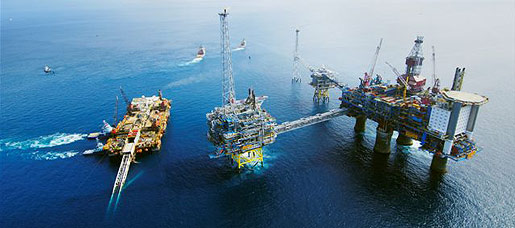Nov 8 2005
The laying of the south part of the world's longest sub-sea pipeline - the whole length of which will run between Nyhamna in northwest Norway and Easington in the UK - was completed this past weekend by the vessel "LB200". Gas from the Ormen Lange field will start flowing through the pipeline in 2007 to cover up to one-fifth of the UK's gas demand.
"We are very pleased to have completed the south part of the Langeled pipeline (between the Sleipner platform in the North Sea and Easington) this year. This is an important milestone in the project," says Hydro project director, Tom Røtjer.
In addition to being half-way done with laying Langeled, the half-way mark has also been passed for the whole Ormen Lange/Langeled project.
The entire project, which is calculated to cost NOK 66 billion (in 2003 kroner value), is still on time and on budget.
More than one million tonnes of steel has gone into Langeled and production of pipe for the transport system occupied one-third of the world's combined production capacity for this type of pipeline.
Bredero Shaw in Farsund has so far treated some 80,000 lengths of Langeled pipe for rust and weight coating.
A total of 43,000, 12-meter long pipe lengths have gone into the 525-kilometer long southern part of the pipeline.
The southern section of Langeled has a combined weight of more than one million tonnes, including weight coating. The pipeline has a 44-inch diameter.
Starting in October 2006, gas will flow through this part of the pipeline from the Sleipner field in the Norwegian sector of the North Sea to Easington.
The remaining, northern section of the Langeled pipeline will be laid from Sleipner to Nyhamna next year.
The pipes are manufactured in Germany and Japan and pre-treated for rust and weight coated at the Bredero Shaw yard in Farsund, Norway, before being installed on the sea floor. The job has required more than one million tonnes of concrete and 25,000 tonnes of iron reinforcement.
All the pipes have now been manufactured and just 20,000 of a total 100,000 pipes still await treatment in Farsund.
When production from the Ormen Lange field starts in fall 2007, some 70 million cubic meters of gas, a volume comparable to Norway's entire daily energy consumption, will flow through the Langeled pipeline. The pipeline is being laid by the vessels, "LB200" and "Solitaire", owned, respectively, by Stolt Offshore and Allseas.
From Sleipner to Easington, the pipeline has a diameter of 44 inches, while the section between Nyhamna and Sleipner will have a diameter of 42 inches.
The "LB200" is a big floating pipe factory. It has six welding stations along the length of the ship. The pipes are welded together, before a protective coating is put on. Then an ultrasound check of the welds is made before the pipeline is laid on the sea floor at a speed of up to five kilometers daily.
There have been no serious injuries aboard the "LB200", despite a total of two million worked hours. The vessel is like a mini-United Nations, with a crew of 370 from 30 different countires.
Hydro is operator of the development phase of the Ormen Lange/Langeled project, while Statoil has project management of the pipeline laying project. The project organization is manned by personnel from both companies.
 |
| The pipeline-laying vessel "LB200" at work near the Sleipner platform. (Photo: Kim Laland/Statoil) |
http://www.hydro.com